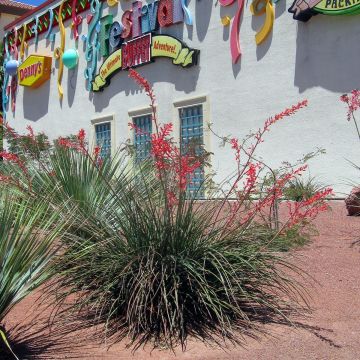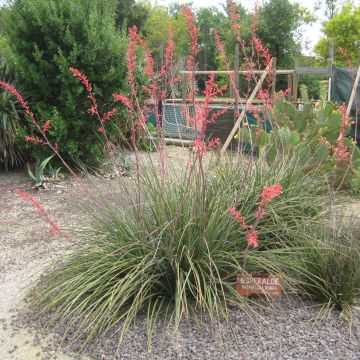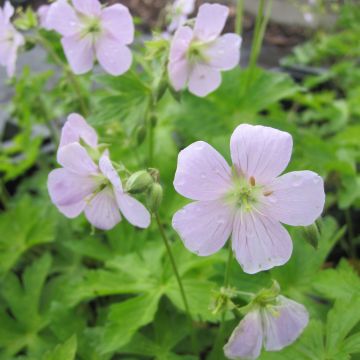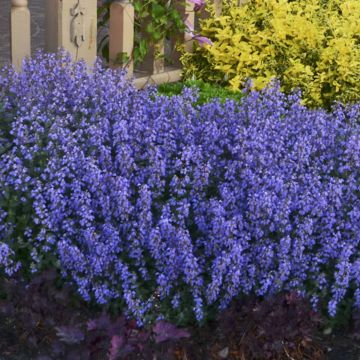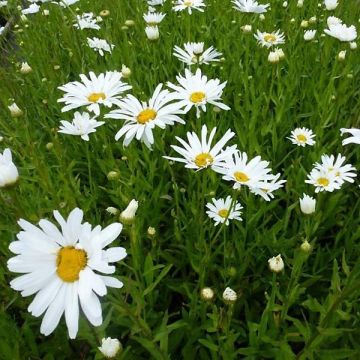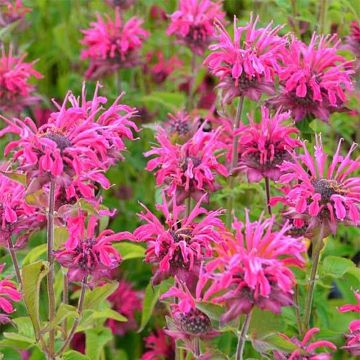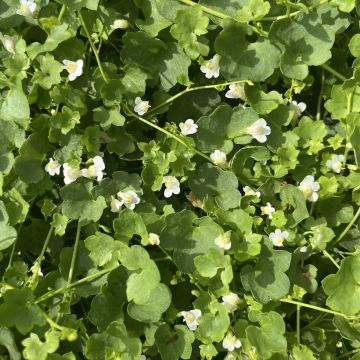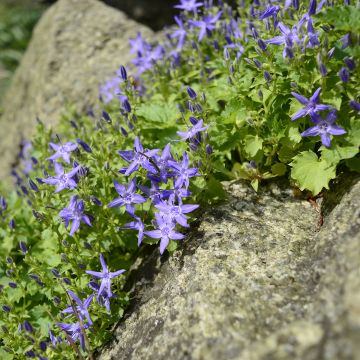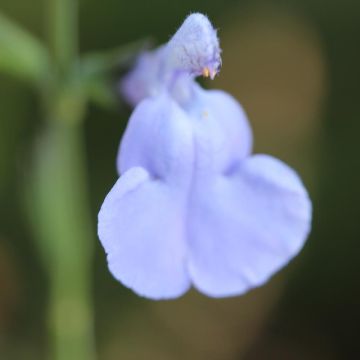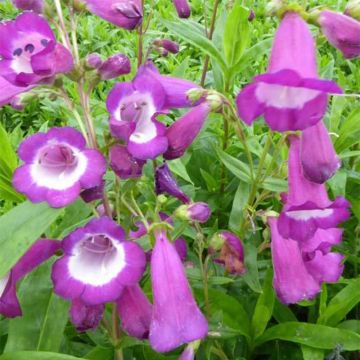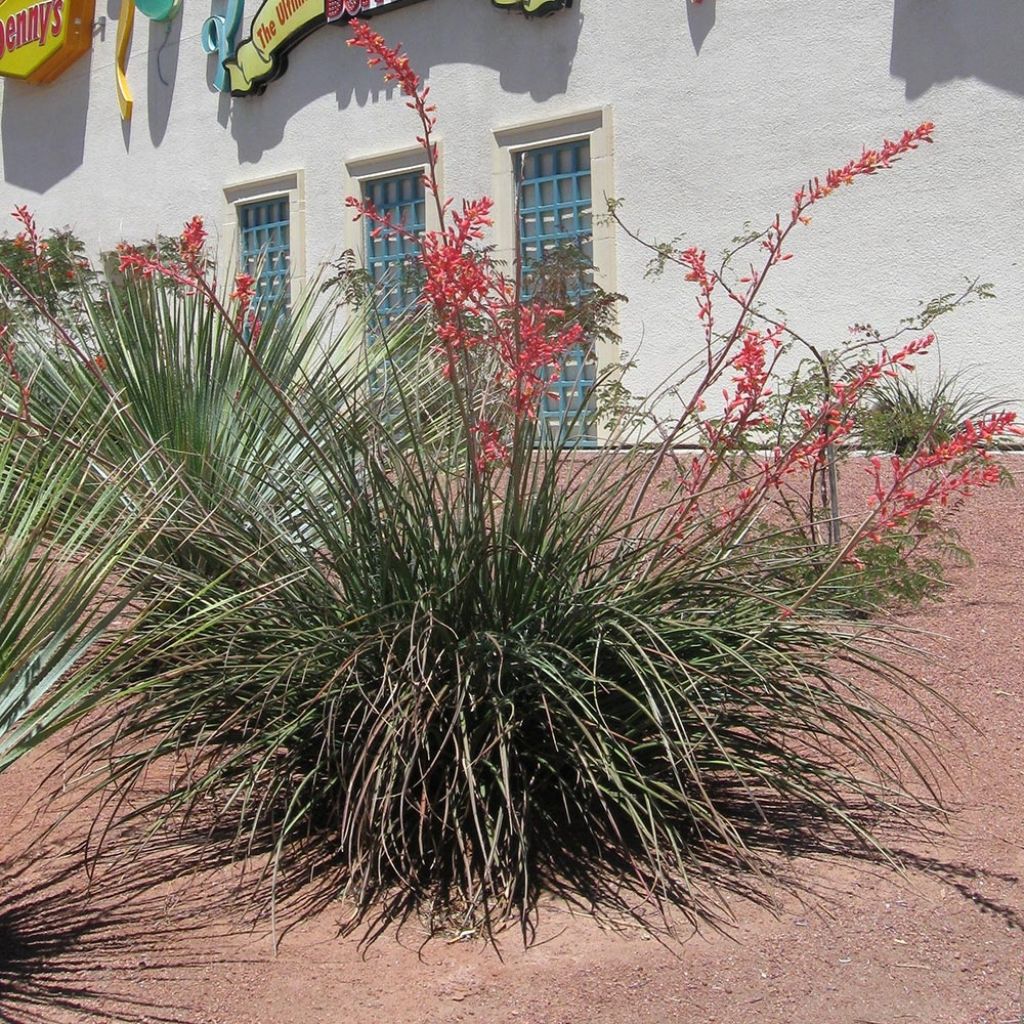

Hesperaloe parvifolia Rose des Sables
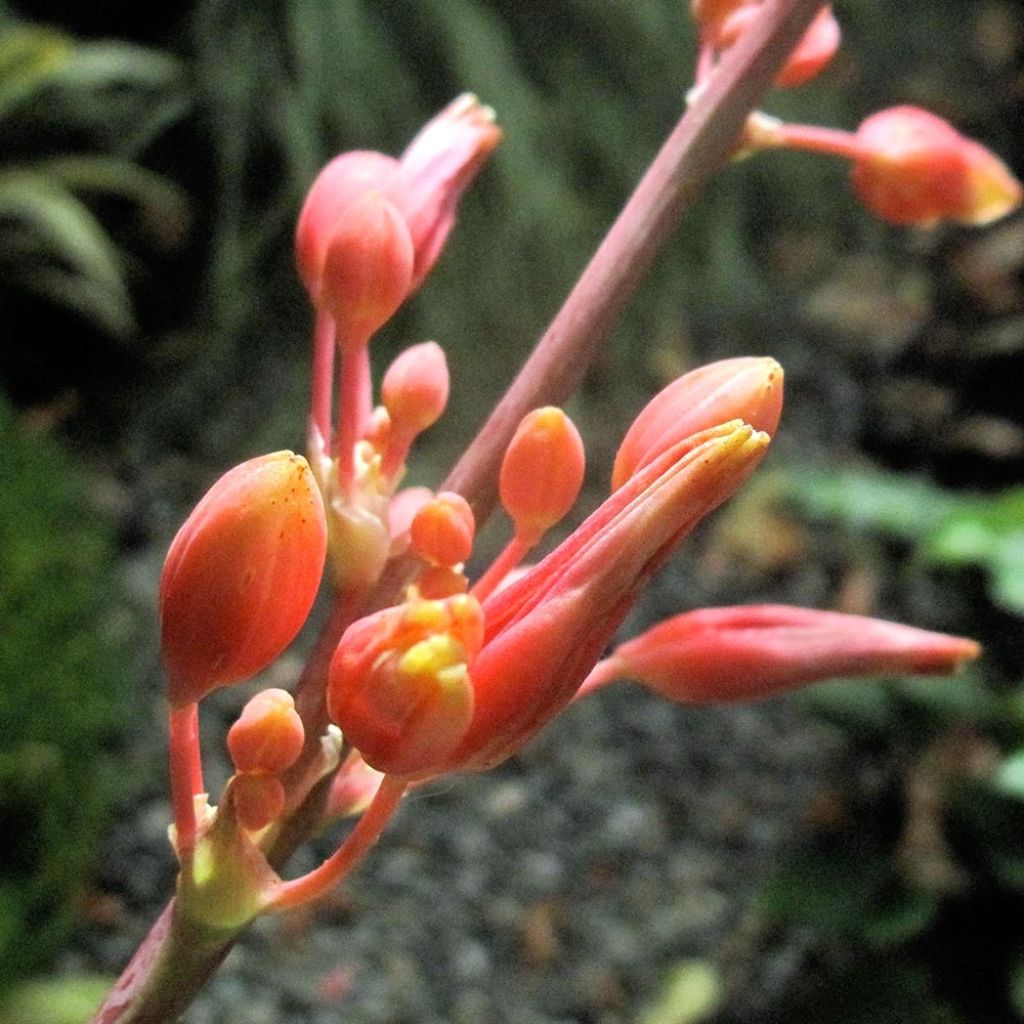

Hesperaloe parvifolia Rose des Sables
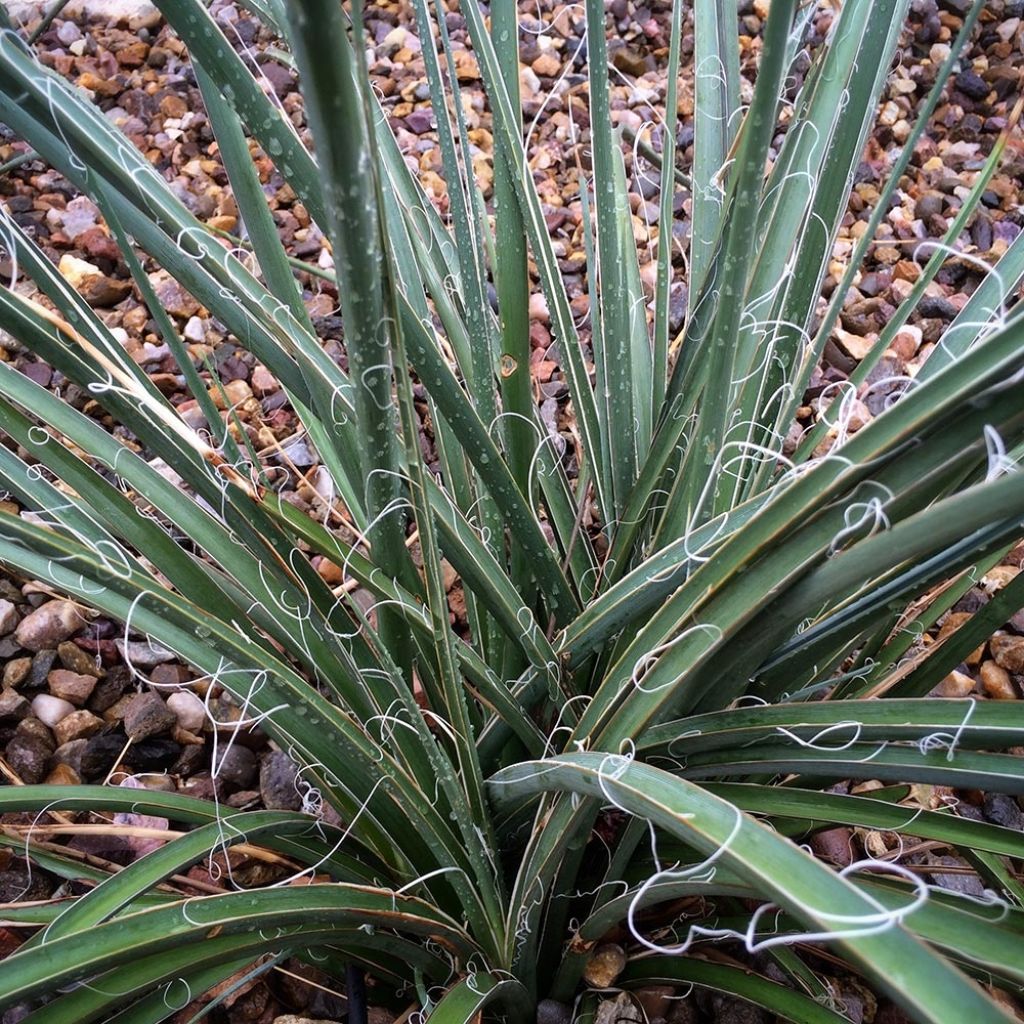

Hesperaloe parvifolia Rose des Sables
Hesperaloe parviflora Rose des Sables - Red Yucca
Hesperaloe parviflora Rose des Sables
Small-flowered hesperaloe, Red Yucca
Plant arrived in relatively good condition but soil spilled in the box. Some branches broken. Planted: For now, looks good, will keep an eye on it.
Choume , 18/09/2024
This item cannot be shipped to the selected country
Delivery charge from €5.90
More information
Schedule delivery date,
and select date in basket
This plant carries a 12 months recovery warranty
More information
We guarantee the quality of our plants for a full growing cycle, and will replace at our expense any plant that fails to recover under normal climatic and planting conditions.
From €5.90 for pickup delivery and €6.90 for home delivery
Express home delivery from €8.90.

Does this plant fit my garden?
Set up your Plantfit profile →
Description
The Hesperaloe parviflora 'Rose des Sables' differs from the wild species sometimes called the Red Yucca only by its smaller stature and its ability to produce more flowers. It is one of the most beautiful plants in the Agave family, and one of the easiest to acclimate in our gardens. Its evergreen, non-prickly foliage evokes a small fountain, from which tall and graceful flowering stalks loaded with small, bright salmon-red flowers emerge in summer. In New Mexico and Arizona, this extremely drought-resistant perennial is commonly planted as a ground cover by landscape professionals who use it to replace water-demanding lawns. Surprisingly, this Hesperaloe, with its exotic appearance, is a plant adapted to extreme climates, capable of withstanding our wet and cold winters and snow in well-drained soil. A must-see!
Native to the Chihuahuan Desert, spanning from Texas to Mexico, extending to the Texas mountains that regularly experience heavy frosts and snowfall in winter, as well as arid summers, the Hesperaloe parviflora is a plant adapted to extreme weather conditions. Yet, it is an elegant and generous species that has the ability to bloom under scorching heat, without water, as if it were indifferent to its environment. The 'Rose des Sables' variety has been selected for its compact habit and increased floribundity. This herbaceous and perennial succulent plant has rhizomes capable of producing suckers but lacks aerial stems. It forms a basal rosette, 30-40 cm (11.8-15.7 in) tall and 60 cm (23.6 in) wide, slowly spreading over the years to eventually form a thick ground cover. The long, slender, pointed leaves persist throughout winter. They are narrow, linear, and rigid, gutter-shaped, with thin twisted filaments along the edges. The spectacular flowering takes place from June to August, sometimes extending throughout September. One to several branching flowering stalks, 90 cm (35.4 in) to 1 m (3 ft 4 in) tall, slightly arched at the tips, emerge from each rosette. Each stalk bears numerous small tubular and trailing flowers in a beautiful shade of salmon-red to bright coral. This highly nectar-rich and nectariferous flowering attracts many pollinating insects. The plant is hardy down to -15°C (5 °F) in well-drained soil, and even more so in dry soil during winter.
The Hesperaloe parviflora 'Rose des Sables' is a unique plant for its remarkable architectural silhouette and robustness. A boon for very dry, rocky, or sandy gardens where soil is scarce, it is ideal for creating large flowering borders throughout summer, structuring a large rock garden or exotic bed, or brilliantly filling an unattractive area of the garden, always in full sun. It can be planted in isolation with trailing plants (Teucrium, Thymus, Sedum, Sempervivum) or associate it with small drought-tolerant shrubs on a dry slope (Hertia cheirifolia, Perovskia, Cistus, trailing Rosemary), and light grasses (Stipa tenuissima or barbata), all equally hardy and undemanding. Highly floriferous plants like Gaura, Nepeta Six Hills Giant, or the indestructible Erigeron karvinskianus can accompany its flowering throughout summer. It is also a good plant for decorating a modern or minimalist terrace.
Report an error about the product description
Hesperaloe parviflora Rose des Sables - Red Yucca in pictures
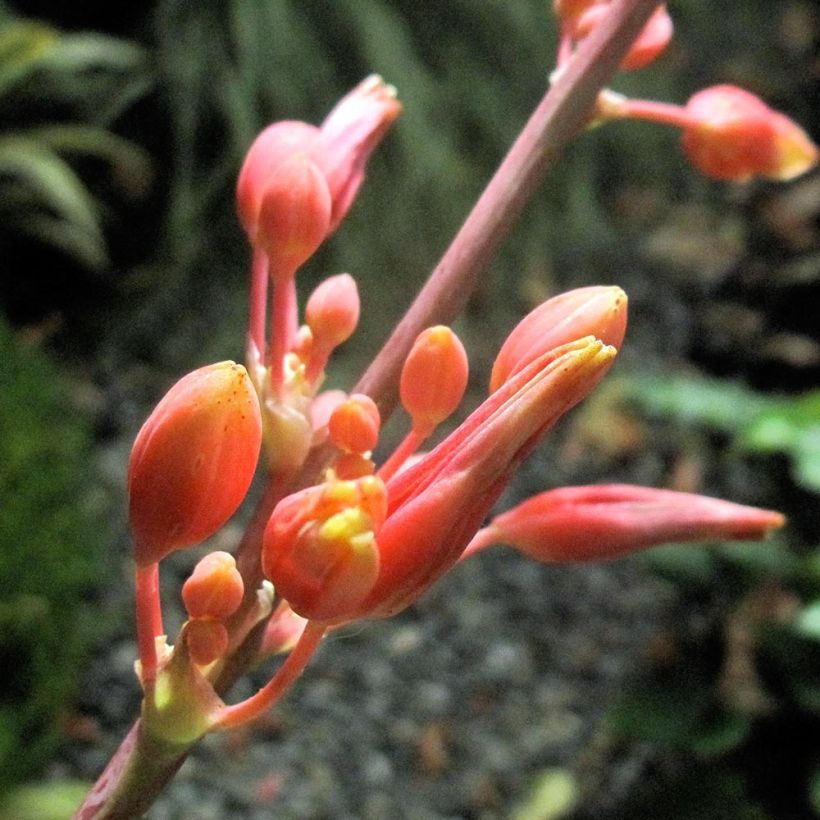

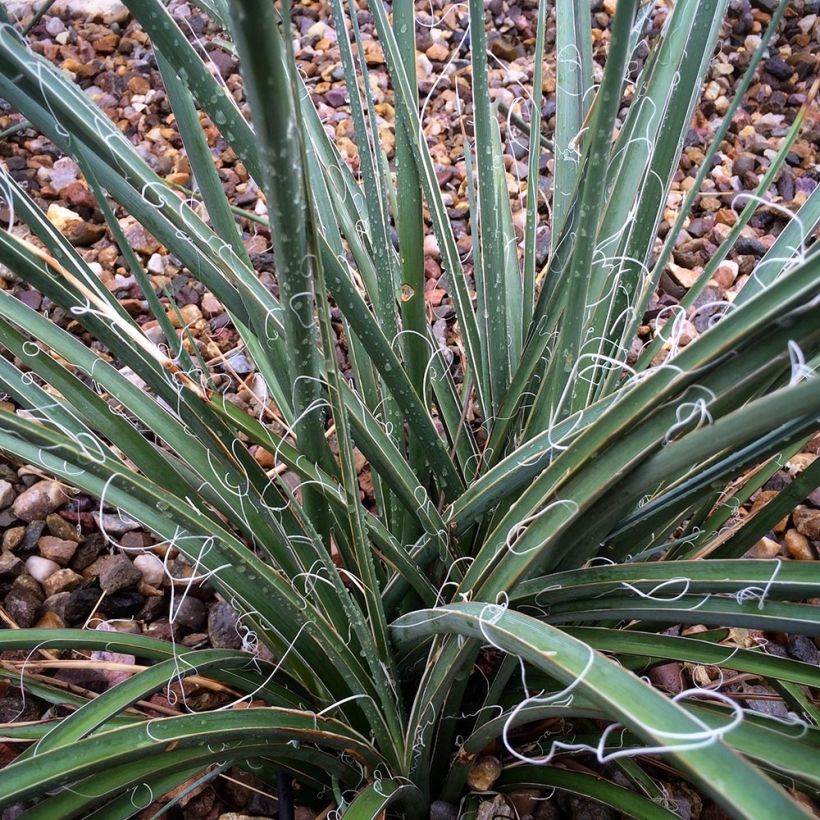

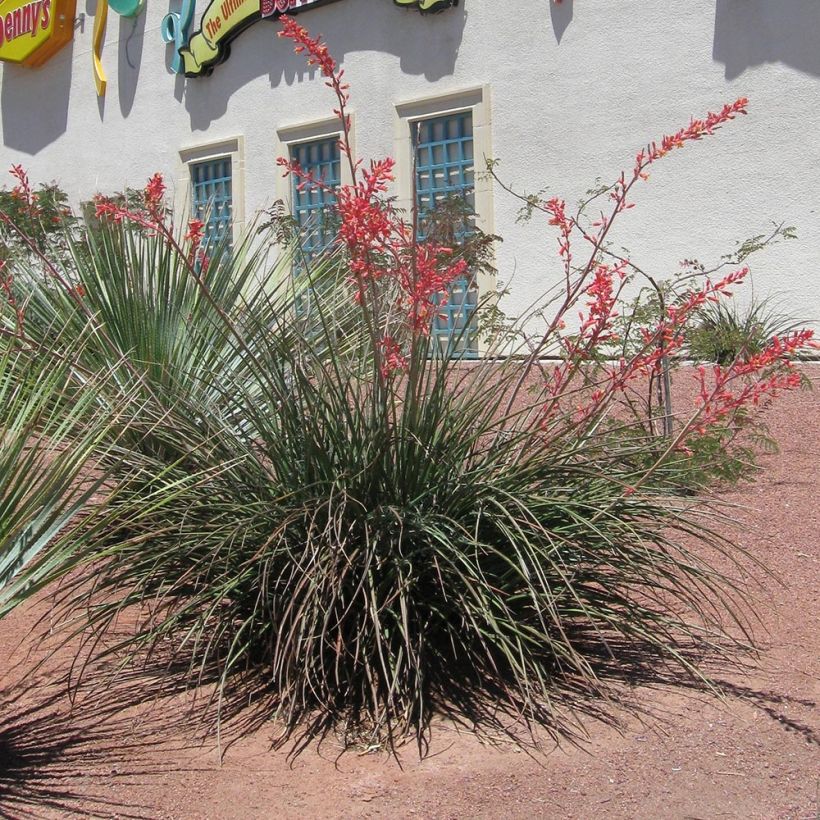

Flowering
Foliage
Plant habit
Botanical data
Hesperaloe
parviflora
Rose des Sables
Agavaceae
Small-flowered hesperaloe, Red Yucca
North America
Other Hesperaloe - Yucca rouge
Planting and care
To ensure optimal growth, plant the Hesperaloe parviflora 'Rose des Sables' in an area that receives full sunlight. The plant can thrive in ordinary soil that is not too heavy, such as rocky, slightly acidic, alkaline, or sandy soil, as long as it is well-drained. If your soil is clayey, lighten it by planting on a mound or a raised border 20-30 cm (7.9-11.8 in) above the ground, enriched with coarse sand and gravel. It can tolerate winter humidity and cold weather quite well and handle arid soils during summer and dry conditions. The plant can withstand significant but short-lived frosts, down to about -15°C (5 °F). Snow is not a problem in well-drained and rocky soil.
The Hesperaloe parviflora 'Rose des Sables' has no enemies in our climate and requires minimal maintenance. To ensure healthy growth, simply remove any faded flower spikes. The plant can be propagated by sowing seeds in autumn.
Planting period
Intended location
Care
-
, onOrder confirmed
Reply from on Promesse de fleurs
Summer flowering perennials
Haven't found what you were looking for?
Hardiness is the lowest winter temperature a plant can endure without suffering serious damage or even dying. However, hardiness is affected by location (a sheltered area, such as a patio), protection (winter cover) and soil type (hardiness is improved by well-drained soil).

Photo Sharing Terms & Conditions
In order to encourage gardeners to interact and share their experiences, Promesse de fleurs offers various media enabling content to be uploaded onto its Site - in particular via the ‘Photo sharing’ module.
The User agrees to refrain from:
- Posting any content that is illegal, prejudicial, insulting, racist, inciteful to hatred, revisionist, contrary to public decency, that infringes on privacy or on the privacy rights of third parties, in particular the publicity rights of persons and goods, intellectual property rights, or the right to privacy.
- Submitting content on behalf of a third party;
- Impersonate the identity of a third party and/or publish any personal information about a third party;
In general, the User undertakes to refrain from any unethical behaviour.
All Content (in particular text, comments, files, images, photos, videos, creative works, etc.), which may be subject to property or intellectual property rights, image or other private rights, shall remain the property of the User, subject to the limited rights granted by the terms of the licence granted by Promesse de fleurs as stated below. Users are at liberty to publish or not to publish such Content on the Site, notably via the ‘Photo Sharing’ facility, and accept that this Content shall be made public and freely accessible, notably on the Internet.
Users further acknowledge, undertake to have ,and guarantee that they hold all necessary rights and permissions to publish such material on the Site, in particular with regard to the legislation in force pertaining to any privacy, property, intellectual property, image, or contractual rights, or rights of any other nature. By publishing such Content on the Site, Users acknowledge accepting full liability as publishers of the Content within the meaning of the law, and grant Promesse de fleurs, free of charge, an inclusive, worldwide licence for the said Content for the entire duration of its publication, including all reproduction, representation, up/downloading, displaying, performing, transmission, and storage rights.
Users also grant permission for their name to be linked to the Content and accept that this link may not always be made available.
By engaging in posting material, Users consent to their Content becoming automatically accessible on the Internet, in particular on other sites and/or blogs and/or web pages of the Promesse de fleurs site, including in particular social pages and the Promesse de fleurs catalogue.
Users may secure the removal of entrusted content free of charge by issuing a simple request via our contact form.
The flowering period indicated on our website applies to countries and regions located in USDA zone 8 (France, the United Kingdom, Ireland, the Netherlands, etc.)
It will vary according to where you live:
- In zones 9 to 10 (Italy, Spain, Greece, etc.), flowering will occur about 2 to 4 weeks earlier.
- In zones 6 to 7 (Germany, Poland, Slovenia, and lower mountainous regions), flowering will be delayed by 2 to 3 weeks.
- In zone 5 (Central Europe, Scandinavia), blooming will be delayed by 3 to 5 weeks.
In temperate climates, pruning of spring-flowering shrubs (forsythia, spireas, etc.) should be done just after flowering.
Pruning of summer-flowering shrubs (Indian Lilac, Perovskia, etc.) can be done in winter or spring.
In cold regions as well as with frost-sensitive plants, avoid pruning too early when severe frosts may still occur.
The planting period indicated on our website applies to countries and regions located in USDA zone 8 (France, United Kingdom, Ireland, Netherlands).
It will vary according to where you live:
- In Mediterranean zones (Marseille, Madrid, Milan, etc.), autumn and winter are the best planting periods.
- In continental zones (Strasbourg, Munich, Vienna, etc.), delay planting by 2 to 3 weeks in spring and bring it forward by 2 to 4 weeks in autumn.
- In mountainous regions (the Alps, Pyrenees, Carpathians, etc.), it is best to plant in late spring (May-June) or late summer (August-September).
The harvesting period indicated on our website applies to countries and regions in USDA zone 8 (France, England, Ireland, the Netherlands).
In colder areas (Scandinavia, Poland, Austria...) fruit and vegetable harvests are likely to be delayed by 3-4 weeks.
In warmer areas (Italy, Spain, Greece, etc.), harvesting will probably take place earlier, depending on weather conditions.
The sowing periods indicated on our website apply to countries and regions within USDA Zone 8 (France, UK, Ireland, Netherlands).
In colder areas (Scandinavia, Poland, Austria...), delay any outdoor sowing by 3-4 weeks, or sow under glass.
In warmer climes (Italy, Spain, Greece, etc.), bring outdoor sowing forward by a few weeks.

































